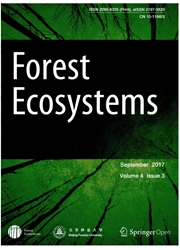

 中文摘要:
中文摘要:
持续开发的一个基本元素是人生活在自然的生物能力以内。确定然而,这仍然是有许多新兴的工具的重要为挑战。生态的脚印的概念是为对持续开发的地位的全面评价的一个如此的财务工具,基于资源消费和陆地能力的集成,反映环境上的人的影响。当生态的脚印超过生物能力时,一个区域的发展被定义为 unsustainable。在这篇论文,生态的脚印概念在估计云南省的发展被使用,在在 1988 和 2006 之间的一个时期的中国。结果证明在云南人均的生态的脚印在 2006 在 1988 ~ 2.11 gha 从 0.854 gha 升起了。生态的赤字,把生物生产能力定义陆地上的人的需求什么时候超过这些区域,在 1991 出现了并且快速在 2006 在 1991 ~ 1.05 gha 从 0.02 gha 增加了。生态的赤字的增加主要是人口和消费水平的快速的增加的结果。为了在云南,生产和消费完成持续开发,率需要被修改。
 英文摘要:
英文摘要:
A fundamental element of sustainable development is that humans live within nature's biological capacity. Quantifying this, however, remains a significant challenge for which there are many emerging tools. The concept of the Ecological Footprint is one such accounting tool for comprehensive assessment of the status of sustainable development, based on integration of resource consumption and land capacity, reflecting the human impact on the environment. A region's development is defined as unsustainable when the Ecological Footprint surpasses the biological capacity. In this paper, the Ecological Footprint concept Was applied in assessing the development of Yunnan Province, China in a period between 1988 and 2006. The results showed that the Ecological Footprint per capita in Yunnan rose from 0.854 gha in 1988 to 2.11 gha in 2006. Ecological deficit, defined as when the human demand on the land surpasses the regions biological productive capacity, emerged in 1991 and quickly increased from 0.02 gha in 1991 to 1.05 gha in 2006. The increase in the ecological deficit is primarily a result of the rapid increase in population and consumption level. To achieve sustainable development in Yunnan, production and consumption rates need to be modified.
 同期刊论文项目
同期刊论文项目
 同项目期刊论文
同项目期刊论文
 期刊信息
期刊信息
